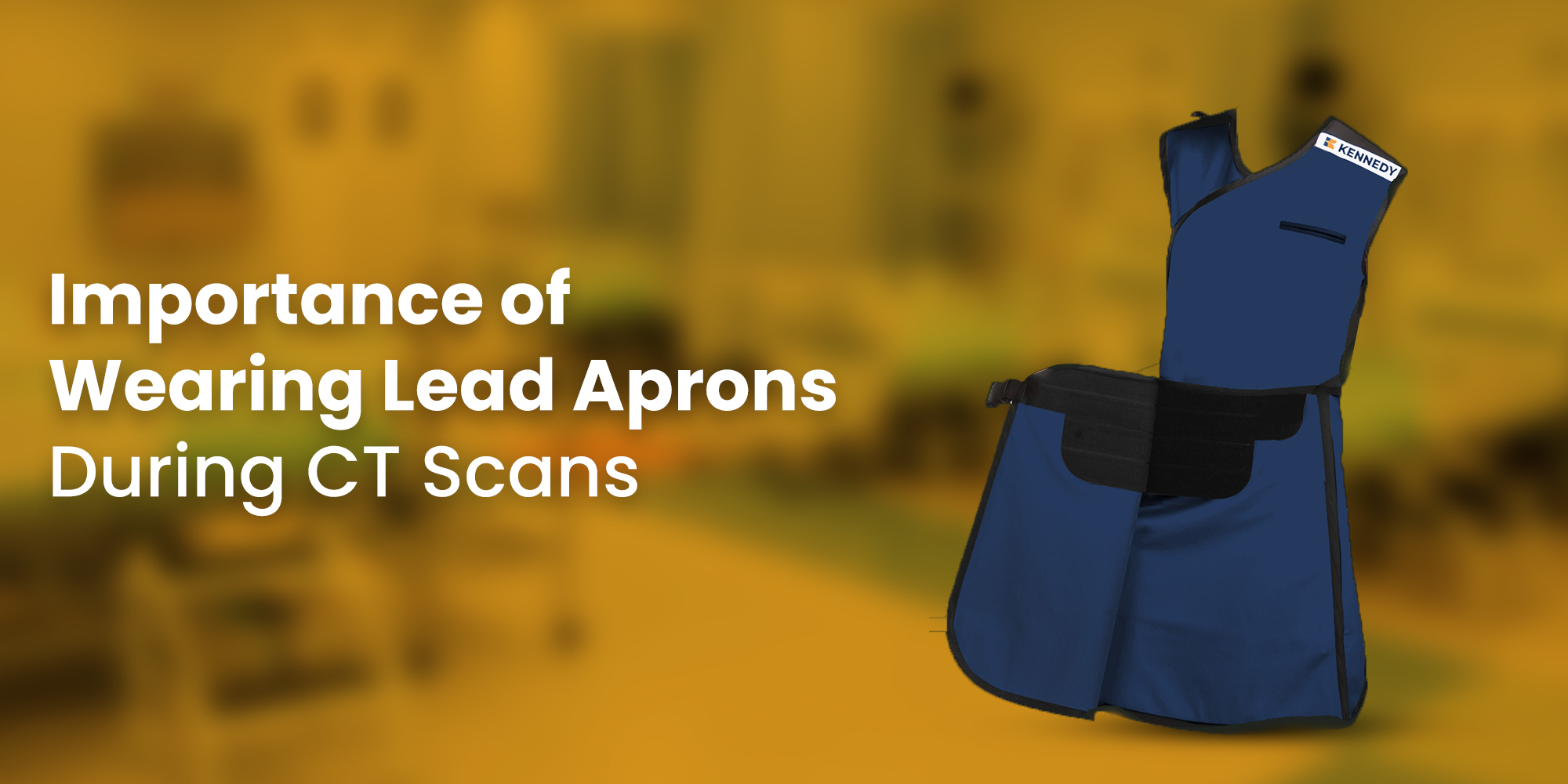Medical imaging technology advancements have revolutionized how healthcare professionals
diagnose and treat various medical conditions. Computed Tomography (CT) scans, in particular,
have become a cornerstone of medical diagnostics, enabling physicians to peer deep into the
human body and uncover intricate details once hidden from view. However, as with any
powerful technology, there comes a responsibility to ensure the safety of both patients and
healthcare workers. This is where lead aprons step onto the stage, playing a crucial role in
safeguarding against the potential risks associated with ionizing radiation.
Understanding the Link Between CT Scans and Ionizing
Radiation
Before delving into the importance of wearing lead or radiation protection aprons during CT
scans, it’s essential to grasp the fundamental concepts surrounding CT scans and ionizing
radiation.
CT scans, also known as computed tomography scans or CAT scans, utilize X-rays to produce
detailed cross-sectional images of the body. These images provide invaluable insights into
various medical conditions, aiding in diagnosing and treating ailments ranging from internal
injuries to cancer.
Producing these images involves the emission of ionizing radiation, which has enough energy to
remove tightly bound electrons from atoms, potentially damaging living tissues. While there are
several benefits of CT scans, on the other hand, exposure to ionizing radiation poses certain
health risks, making radiation safety a paramount concern especially for healthcare professionals
who conduct multiple scans every day.
Scattered Radiation and the Need for Radiation Protection
The primary X-ray beam is directed towards the patient’s body during a CT scan to create the
desired images. However, some of this primary radiation interacts with the patient’s tissues,
causing scatter radiation to be emitted in various directions. This scattered radiation, even if it
has lower intensity than the primary beam, still has the potential to reach nearby individuals,
including healthcare professionals and accompanying caregivers.
It’s essential to recognize that the risk of harm from scattered radiation is relatively low for
patients, as the amount of radiation is carefully controlled and the benefits of obtaining
diagnostic information generally outweigh the potential risks. But, for healthcare workers
exposed to ionizing radiation regularly, even small doses of radiation can accumulate over time
and increase the risk of long-term health effects, such as cancer.
Lead Apron’s Role in Radiation Protection
Lead apron is a piece of personal protective equipment designed to shield against ionizing
radiation. These aprons are typically lined with lead or lead-equivalent materials, which can
absorb and attenuate X-rays. A healthcare professional wearing a lead apron acts as a physical
barrier between them and the scattered radiation. The apron effectively absorbs much of the
scattered X-rays, preventing them from penetrating the wearer’s body and reducing the potential
for harmful radiation exposure.
Contrary to popular belief, the importance of lead aprons goes beyond patient protection. While
modern CT scan machines have advanced safety features that minimize unnecessary radiation
exposure, wearing lead aprons remains a vital practice. This is because even with the best
technology, a small but measurable amount of scattered radiation still escapes the confines of the
scanning room. The lead apron serves as a last line of defense, ensuring that healthcare workers
and caregivers are shielded from any unexpected exposure.
Evolution of Guidelines and Ongoing Debates
Over the years, the guidelines and recommendations for radiation protection have evolved in
response to technological advancements and changes in our understanding of radiation risks.
There has been some debate within the medical community regarding the necessity of lead
aprons for healthcare workers during certain procedures, like fluoroscopy and low-dose X-rays.
However, it’s important to remember that even if the absolute risk is low, the principle of
minimizing unnecessary radiation exposure should still be upheld. Also, while the use of lead
aprons might not be universally required in all scenarios, their symbolic significance in
promoting a culture of radiation safety should not be underestimated.
As medical technology advances, it’s vital to strike a balance between harnessing the benefits of
innovative diagnostic tools like CT scans and mitigating potential risks. Lead apron offers
shielding that safeguard the health and reaffirming the principle that prevention is always
preferable to cure in medicine.







